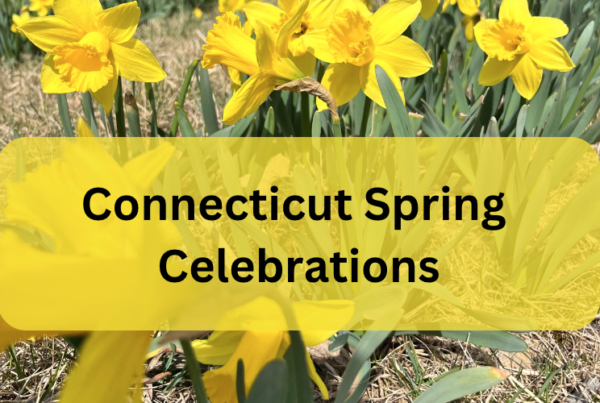Eagle Watch in CT
It is February and two adult Bald Eagles are sitting shoulder to shoulder on a branch above their old nest, across from the Connecticut River Museum in Essex. Eagles have been breeding here for over a dozen years and now they’re back, getting ready to repair their nest and begin a new family. This event signals the beginning of another season of the return of the majestic Bald Eagle to the lower Connecticut River.
The eagles across the river on Nott Island are “locals” and for them Essex is a year-round home. They are joined by 20 – 50 “visiting” eagles that come all the way from northern New England and Canada to spend the winter. Bald Eagles are primarily fish eaters and as northern lakes and rivers freeze, the big birds drift south looking for open water where they can catch fish and survive winter. One of the best places to survive the hardships of a New England winter is the lower 12 miles of the Connecticut River. The combination of river-flow, tides and proximity to the coast creates a micro-climate that keeps the lower river from freezing solid and is perfect for winter fishing.
The story of the American Bald Eagle is also the story of the Connecticut River. A mere 50 years ago the Bald Eagle was nearly extinct and the River was a polluted mess. The eagles had dwindled from 500,000 to a mere 500. Between 1959 and 1989 there were no eagles in Connecticut at all and the last holdout for these great birds was in Alaska and northern Canada. Eagles had been persecuted by hunters, farmers, and loss of habitat, and poisoned by chemical insecticides and pollution. Suddenly they were almost gone. Then the alarm was sounded, first by Rachael Carson with her book Silent Spring and then by Old Lyme wildlife artist and bird champion Roger Tory Peterson. The public saw how despoiled the environment was and new laws were passed including the Clean Water Act, and the Bald Eagle was protected by The Endangered Species Act. Gradually the River started to clean up and fish returned. Little by little the double comeback continued, eagle and river, gradually building strength until almost as if by magic they were both back: strong and healthy.
Each winter the Connecticut River Museum shares the story of the Bald Eagle through the EagleWatch and Winter Wildlife Boat cruises, Eagles of Essex exhibit and related programs. In February and March you can join environmental educators aboard Project Oceanology’s 64 foot vessel Enviro-Lab III for a guided cruise of the River to see adult and juvenile eagles, other raptors, wintering ducks, seals and even more. For more information on Eagle Watch in CT, please visit ctrivermuseum.org.
~ Provided by Bill Yule, Connecticut River Museum Environmental Educator

Adult Bald Eagles – Photograph by Joan Meek, CT River Museum

Immature Eagle in Flight – Photograph by Joan Meek, CT River Museum




